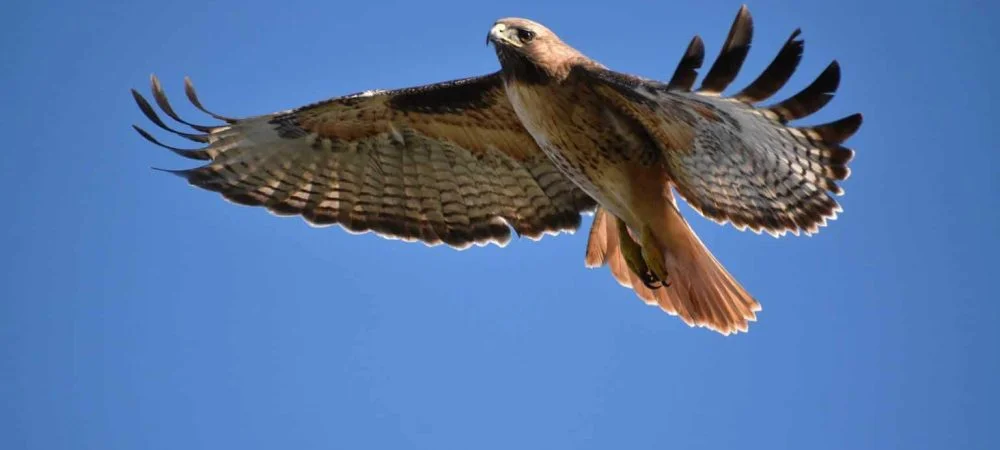
Want to learn more? This book on the Birds of Prey of North America is a fantastic read!
Illinois is a Midwestern state in The United States that borders Indiana in the east and the Mississippi River in the west.
This state is nicknamed the Prairie State due to its exhaustive farmland, forests, hills, and wetlands.
For the most part, Illinois has a continental climate featuring cold winters, warm summers, and recurrent fluctuations in temperature.
It is not surprising that due to its stunning landscape, Illinois is home to 309 state parks and recreational sites on more than 475,000 acres of land.
Consequently, Illinois has a diverse 9 species of hawk! Below are interesting profiles of each of these hawks.
While in Illinois, you’re most likely to observe the Red-Tailed Hawk, but may not readily see the Swainson’s Hawk.
Want to attract birds of prey to your yard? Take a look at our article!
What Hawks can be seen in Illinois?
Table of Contents
1. Sharp-Shinned Hawk
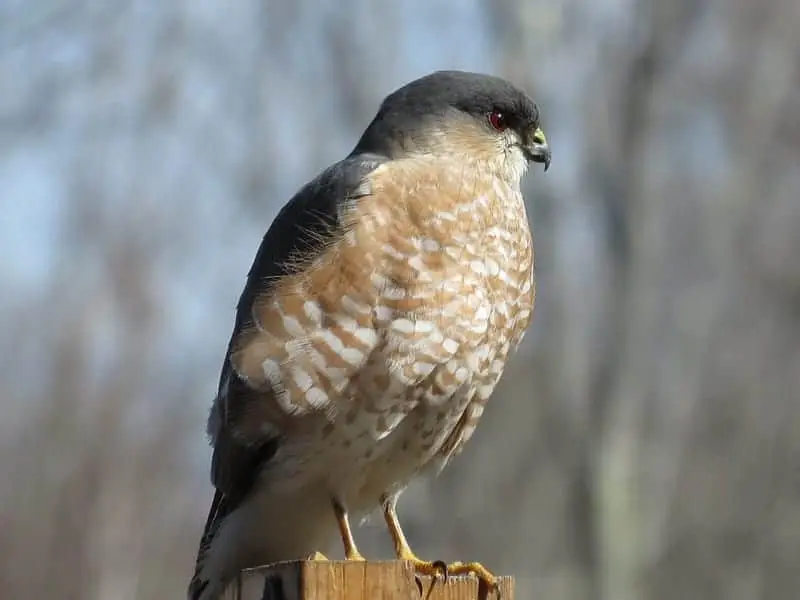
“Sharp-Shinned Hawk” by ‘Dennis Murhpy‘ is licensed under CC BY 2.0
Wingspan
43-56cm
Weight
87-218g
Life Expectancy
3 years
Diet
Robins and Thrushes
Sharp-Shinned Hawks are very small birds–actually, the males are the smallest hawks in the entire country.
Female Sharp-Shinned Hawks, though, are about a third larger than the males. The adult hawks of this species have gray feathers with orange underparts.
Immatures, however, are brown with white underparts. The sharp-shinned hawk is a common migrant, but a rare summer resident in Illinois.
Spring migrants arrive in March, nesting in northern coniferous areas. They prefer dense trees to breed in larger forested areas.
Sharp-Shinned Hawks can be commonly spotted in early spring, and are recognized for their shrill cries and panicked ‘kik’ sounds.
2. Cooper’s Hawk
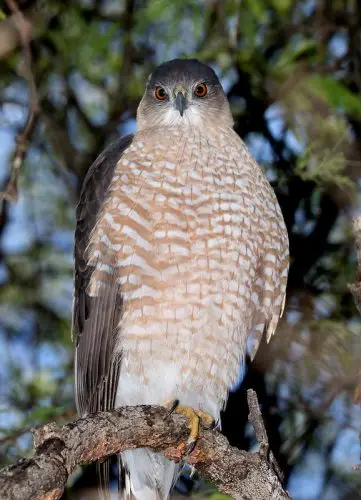
Wingspan
62-90cm
Weight
330-680g
Life Expectancy
Up to 12 years
Diet
Small Birds, Mice & Squirrels
Cooper’s Hawks are small to medium in size, usually about the size of a crow.
Like a number of hawk species, the females are larger than their male partners. Cooper’s Hawks are known for their short, petite wings and round tails.
Adults are a pastel color with orange underparts. Immature hawks have brown and streaky feathers. These hawks are steadily increasing, and were moved from Illinois’ endangered species list.
With the rapid influx in population, Cooper’s Hawks are very territorial when it comes to their homes and families. They prefer to make their homes in Illinois’ abundant forests, mountainous areas, and acres of open spaces.
Cooper’s Hawks nest in tree trunks or in tall trees on their branches. These hawks breed in March and migrate in early autumn where they can be seen in flight throughout early November.
Interestingly, they have adapted to urban and suburban environments where you can see them more commonly than in previous years.
3. Northern Goshawk
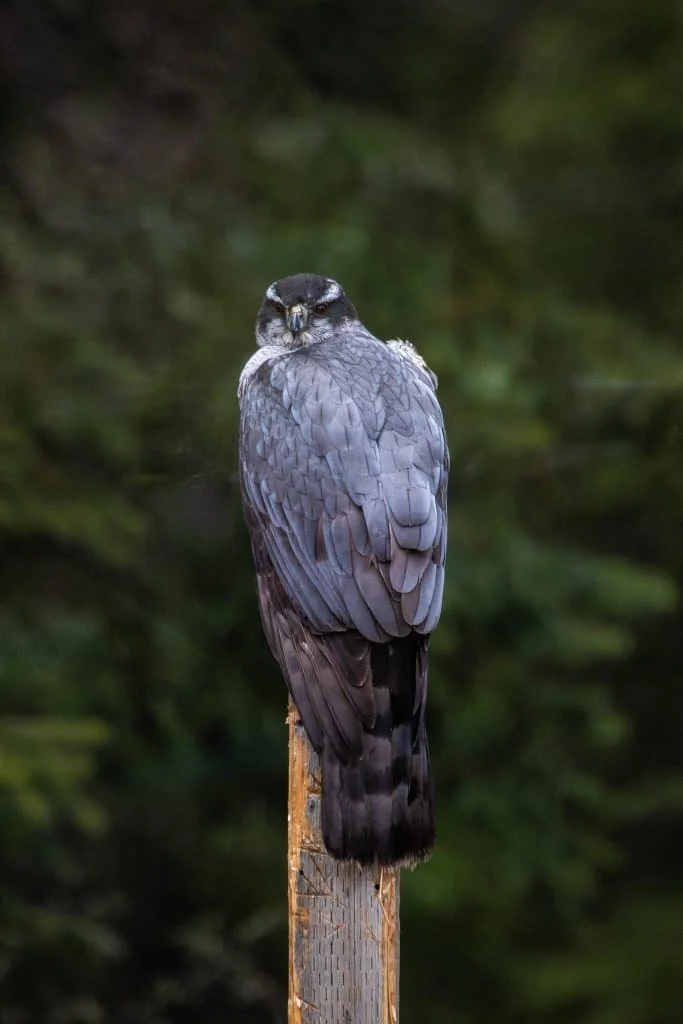
Wingspan
89-127cm
Weight
631-1364g
Life Expectancy
7 Years
Diet
Mammals, reptiles & insects
Northern Goshawks vary slightly in size, usually medium to large size.
Mature hawks are gray on top with pale gray feathers on their underbellies while juvenile hawks are brown.
Take note that female Goshawks are larger and a bit heavier than males. Northern Goshawks are occasional migrants and winter residents in northern Illinois.
They are readily seen in the state’s forests, open areas, and even city parks. These hawks prefer to nest in conifer trees, and are very territorial.
You’ll most likely see these hawks in the fall when they first arrive around September.
Goshawks are easily identifiable by their quick ‘ki-ki’ sound. Though these hawks can be populous and are readily seen in parks, they prefer to remain solitary in large trees.
4. Red-Shouldered Hawk
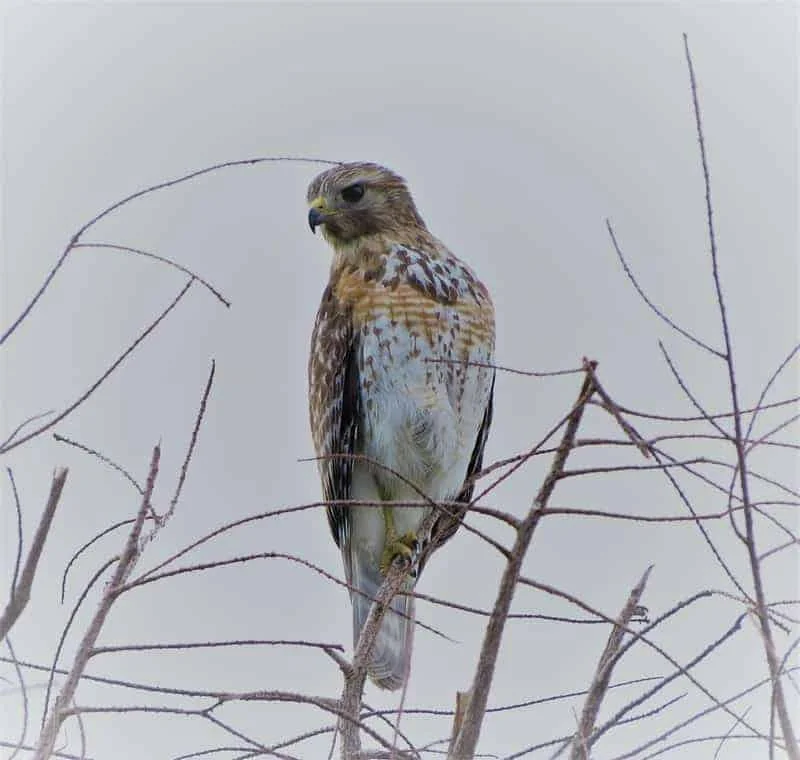
Wingspan
94-111cm
Weight
486g-774g
Life Expectancy
2 years
Diet
Small mammals, reptiles & amphibians
The Red-Shouldered Hawk is a large species known for its long tail and radiantly colored feathers.
Adult hawks have a variety of color patterns, which typically feature a deep orange color on their underparts and bold, black and white patterns on their wings.
Immature hawks of this species can be told apart by their brown backs and white underparts. Red-Shouldered Hawks are an uncommon migrant, summer resident, and winter resident statewide.
Some hawks however, are permanent residents of Illinois. Migrants begin arriving by mid-March with nesting taking place from March through May.
Red-Shouldered Hawks like nesting in forests in the trunks of cone-bearing trees by open waters.
They have extremely distinctive calls–generally a ‘kee-aah’ call with high and low pitched notes. The optimal time to see a Red-Shouldered Hawk is during migration, when they are soaring high above forested areas among trees.
5. Broad-Winged Hawk
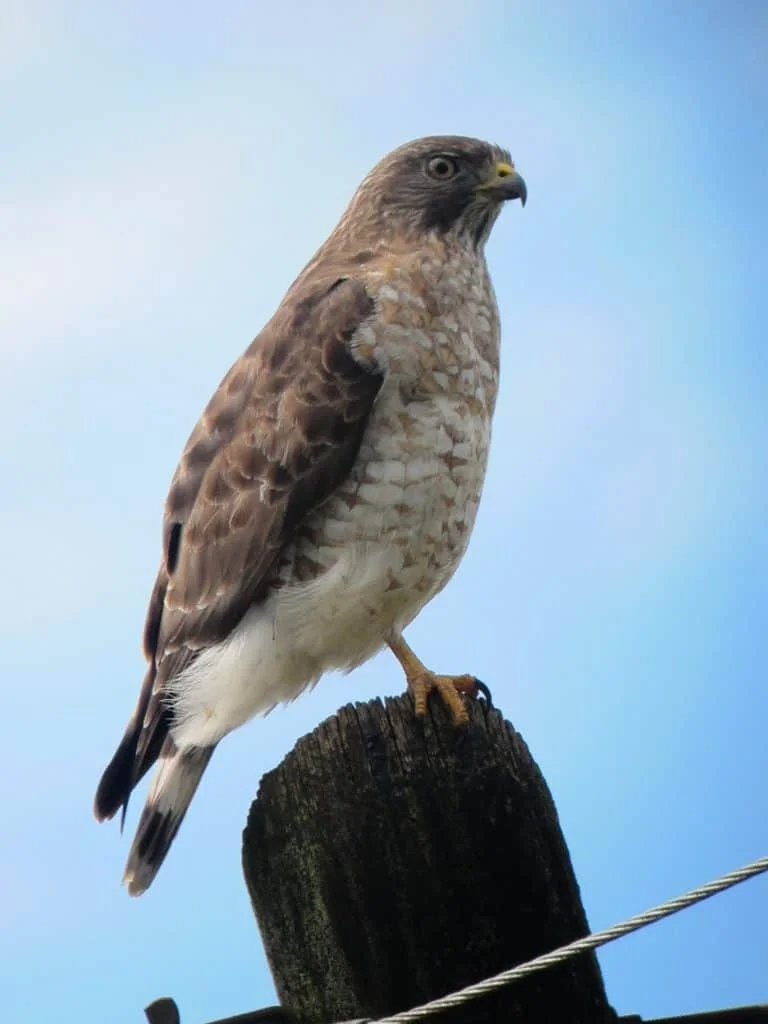
“Broad Winged Hawk” by ‘Felipe Uribe‘ is licensed under CC BY 2.0
Wingspan
81-100cm
Weight
265g-560g
Life Expectancy
Up to 20 years
Diet
Small mammals & insects
Broad-Winged Hawks are medium birds with adults being a red-brown color with a recognizable pattern of black and white bars on their tails.
Like most other juvenile species, they have light brown feathers. The Broad-Winged Hawk is a common migrant but uncommon summer resident in Illinois.
They can be recognized by their high-pitched calls when migrating in the summer months. It’s worth mentioning that the males have a higher call than the females.
You’ll most likely see Broad-Winged Hawks during nesting season.
These hawks nest during April and May, in heavily wooded areas along the Illinois River. They prefer to build their nests in the crotches of trees.
6. Swainson’s Hawk
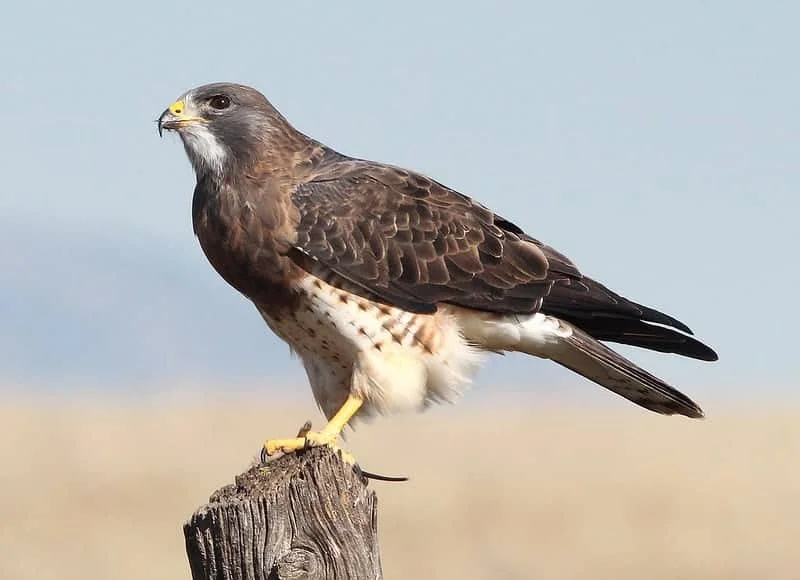
Wingspan
4 feet
Weight
693-1367g
Life Expectancy
16-19 years
Diet
Mammals & Insects
Swainson’s Hawks are a larger species of hawk and are known for their large wings, but shorter tails. Swainson’s Hawks tend to have darker feathers but contrasting, white bellies.
It is quite common for Swainson’s Hawks to vary in color regarding their underparts. Some hawks have pale feathers, while others have brown ones.
Swainson’s Hawks are rare migrants throughout Illinois although they are local summer residents in the northern half of the state.
Though they may not be easily spotted, they live in open grassland habitats.
You’ll most likely see the spring migrants arrive in late March as they nest in Northern Illinois, in isolated trees.
The adult males of this species are known for their piercing, alarm-sounding cries.
Females have a similar version of the cry, but it is shorter. The Swainson’s hawk is endangered in Illinois and has always been relatively uncommon.
7. Red-Tailed Hawk
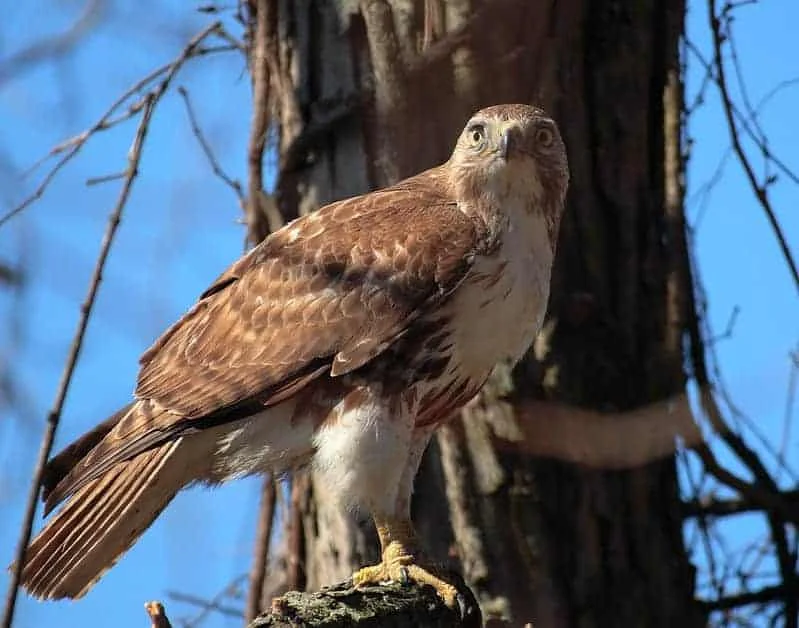
Wingspan
114-133cm
Weight
900-1460g
Life Expectancy
10-15 years
Diet
Small mammals, mice & voles
The Red-Tailed Hawk is commonly recognized as the second largest hawk in The United States.
Similarly, Red-Tails are known for being the most common hawk in North America. These hawks are named for their striking red tails, however they have neutral colored feathers on their underparts.
As with most other hawks, juvenile hawks have not fully developed their color and they do not have red tails.
These hawks are highly distinguishable because of their hoarse call that sounds similar to ‘kee-eeeee-arr”. Furthermore, the call actually changes during the mating season in which these hawks give out a shrill cry. They are also easily identifiable during mating season, observe the males in flight at high altitudes attracting mates by circling above.
Red-Tailed hawks are a more solitary species where they reside in wide open spaces such as fields where they perch on the edges of tall trees during the summer.
You can commonly observe Red-Tailed Hawks along roadways in Illinois. You may also see them awaiting in their nests in tall trees, on the lookout for food.
8. Rough-Legged Hawk
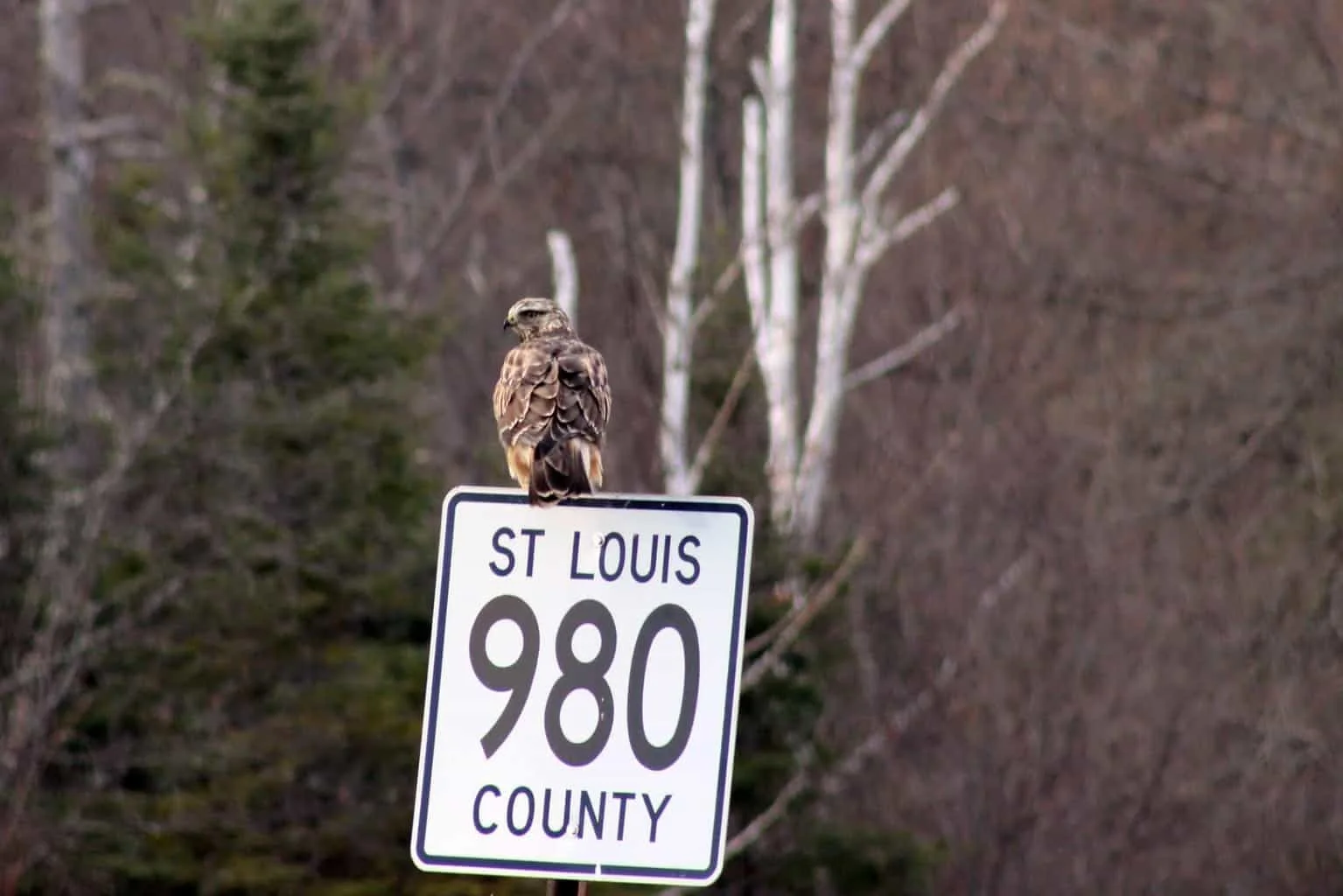
Wingspan
132-138cm
Weight
715-1400g
Life Expectancy
Up to 18 years
Diet
Small rodents
Rough-Legged Hawks tend to be a medium to large sized bird and their colors vary.
These hawks also have highly recognizable feather patterns with contrasting light heads and dark bellies.
These hawks also have light tails with dark colored feathers on the tip. The Rough-Legged Hawk is a common migrant and winter resident in Illinois, most often spotted in northern Illinois.
They are most commonly seen in marshes, fields and open plains. They like to build their nests in low forests, from collections of sticks.
You will be able to identify these hawks by their very familiar sound, similar to the hiss of a cat.
9. Northern Harrier
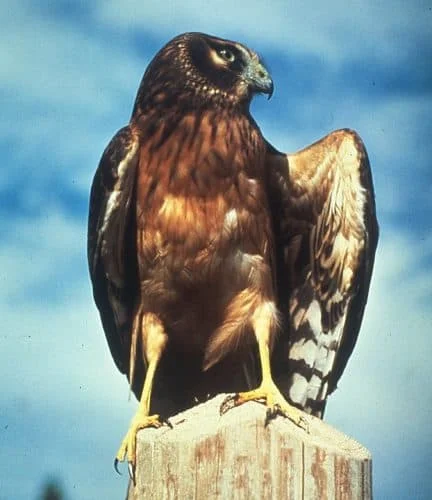
Wingspan
120cm
Weight
390g
Life Expectancy
16 years
Diet
Rodents and small birds
Northern Harrier Hawks are medium birds with thinner wings and long tails.
Female and juvenile Northern Harriers are brown, with the adult male hawks being pale gray and having white underbellies.
You will recognize Northern Harriers by their owl-like features. Relatedly, you will recognize male hawks by their ‘kek’ rapidfire sounds when they are threatened by predators or humans.
Females however, give a more general, high-pitched whistle. Northern Harriers prefer wetlands or grassland but build their nests near open water or fields.
Their spring migration begins in February with nesting taking place from May through July. You are likely to spot these hawks late during nesting season.

More Articles.
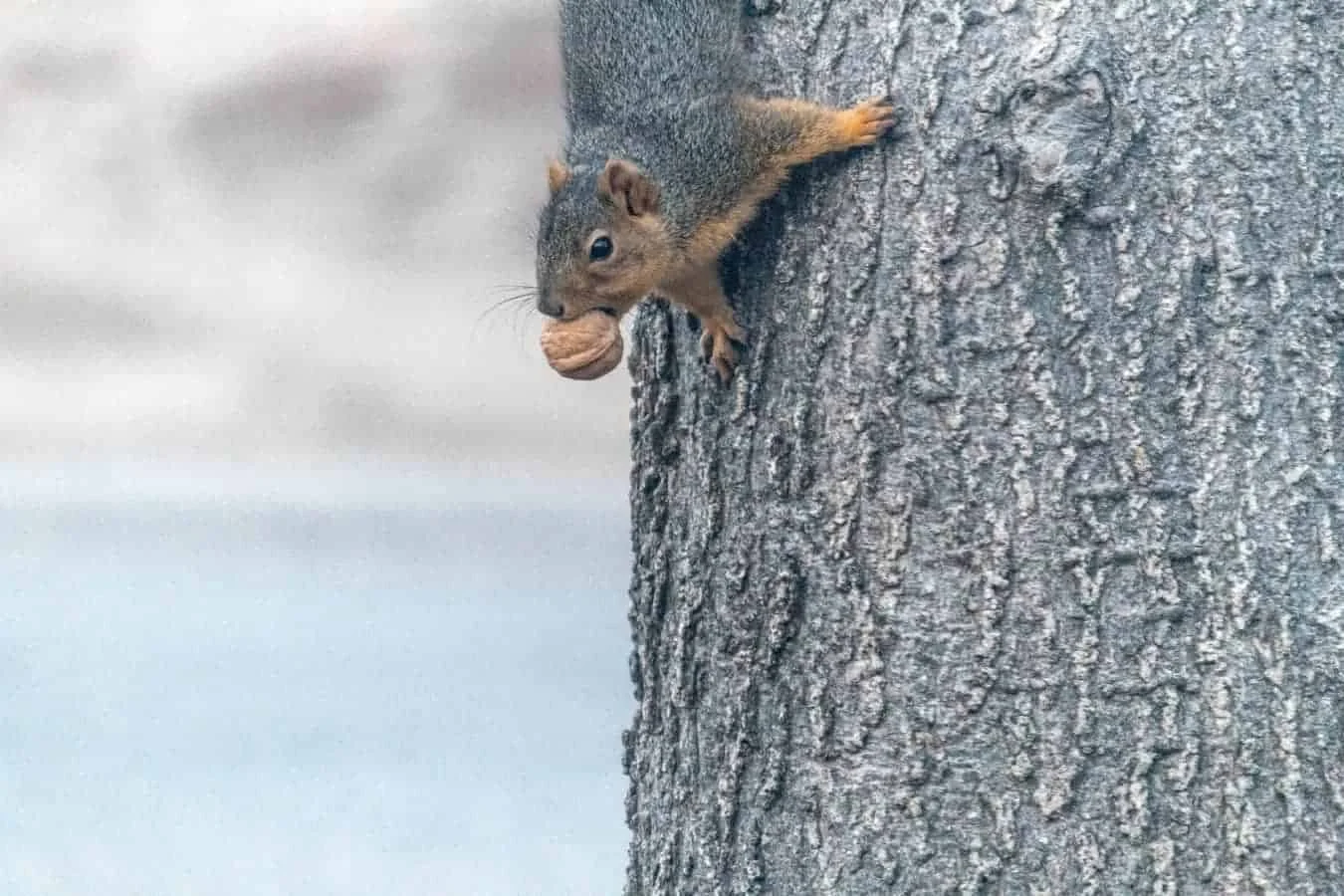
Best Squirrel Proof Feeder 2020
You want to attract and feed birds in your own backyard. You spent hours researching
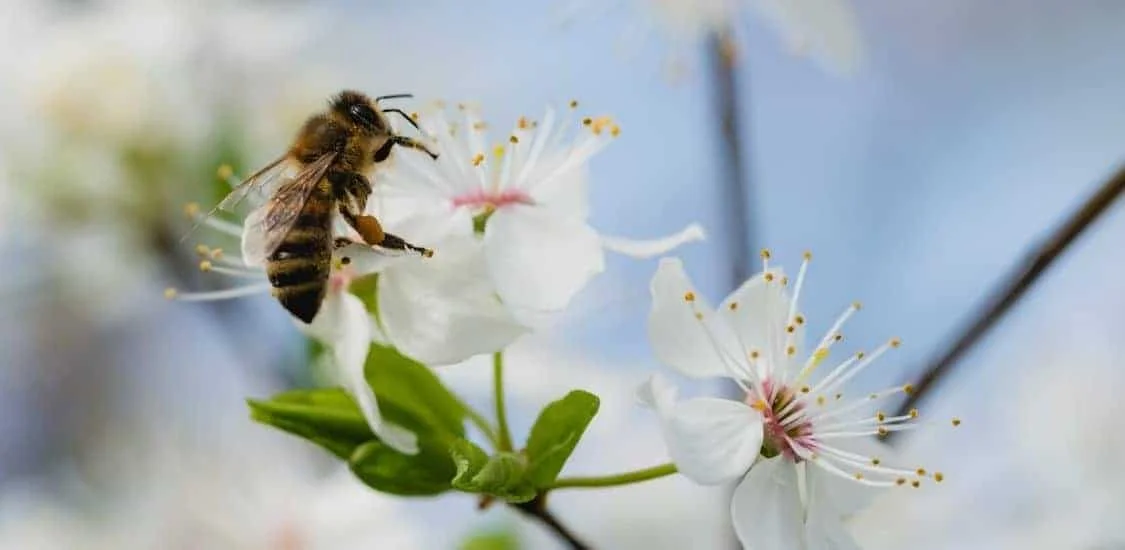
How to Attract Bees to Your Yard?
Bees play a vital role in the environment, helping to spread the pollen of flowers
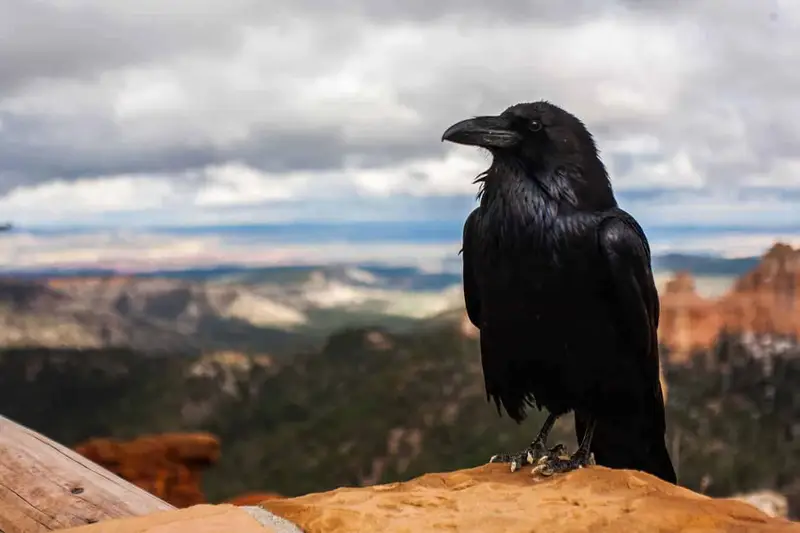
How to Attract Crows to your Yard?
Crows are one of the most iconic birds across the world; instantly recognizable by their

About Us
We are avid bird-watchers who recently retired, allowing us more time to travel the world. Fortunately, we have managed to visit numerous countries around Europe, Asia, and America. Watching and photographing birds has been a passion for many years and we are making the most of the extra time on our hands!
